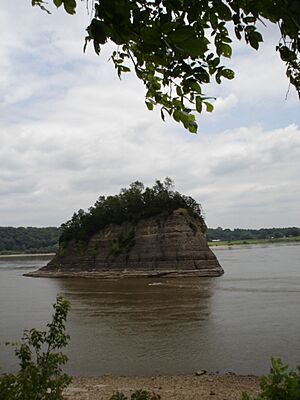River pirate facts for kids
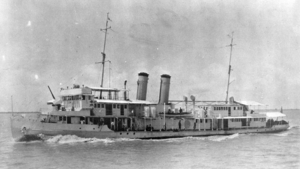
A river pirate is a pirate who operates along a river instead of the open sea. These pirates have been found in many parts of the world. They attack boats and steal goods on rivers in Asia, Africa, Europe, North America, and South America. River pirates are usually dealt with under the laws of the country where they operate.
Contents
River Pirates in Asia
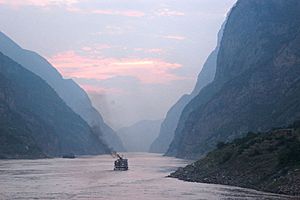
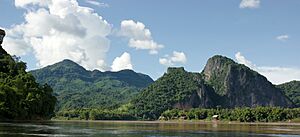

China's Yangtze River Pirates
River piracy is still a big problem in parts of Asia today. For many years, from 1854 to 1949, the United States Navy had a special group called the "Yangtze Patrol". Their job was to protect American trading posts and citizens along China's Yangtze River. They also fought against river pirates and Chinese rebels.
In the 1860s and 1870s, many American merchant ships sailed on the lower Yangtze. They traveled far inland to the port of Hankou, which was about 680 kilometers (420 miles) from the sea. The U.S. gunboat USS Ashuelot even reached Yichang, about 975 miles (1,569 km) from the sea. Sometimes, U.S. Navy sailors and Marines had to go ashore to protect American interests from pirates.
Modern Piracy on the Mekong River
Today, in a region called the "Golden Triangle" in Southeast Asia, river piracy is a serious issue. This area includes parts of Thailand, Laos, and Myanmar. Law enforcement agencies from different countries work together to try and stop these pirates.
River Pirates in Europe
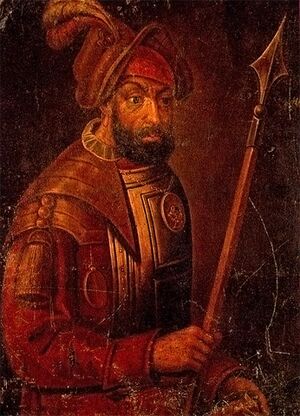
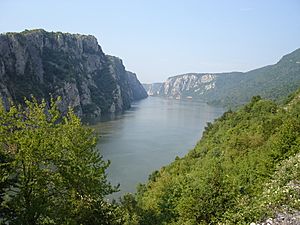
Medieval Pirates in the Balkans
In the Balkans region, which includes Bosnia and Herzegovina and Croatia, there were pirates in the Middle Ages. The Narentines, from the 800s and 900s, were famous for their piracy on the Neretva River.
Russian River Pirates
The Ushkuiniks were medieval Russian river pirates from the 10th to 14th centuries. They were like a Slavic version of the Vikings, known for fighting and stealing. In the 1500s, during the time of Tsar Ivan the Terrible, a famous explorer and soldier named Yermak Timofeyevich was a Russian Cossack river pirate. He operated along the Volga or Don River. Yermak was later forgiven for his crimes and became known as the "Conqueror of Siberia."
Piracy on the Danube River
Modern piracy has been reported on the Danube River in Serbia and Romania. In 2006, there were claims that Romanian river pirates attacked ships from Bulgaria. The Romanian government said that captains might have been making up stories while illegally selling their own goods. In 2012, there were more claims of piracy on Ukrainian ships. Most of these incidents were thefts from cargo vessels, not actual attacks on the crews.
River Pirates in North America
United States River Pirates
Ohio and Mississippi Rivers
American river piracy in the late 1700s and mid-1800s mostly happened along the Ohio River and Mississippi River valleys. River pirates often worked from isolated settlements. These areas had few people and little protection from the law.
Pirates used different tricks to attack boats. They would use deception, hide, or set ambushes. They also attacked in open combat near natural spots like caves, islands, narrow parts of the river, rapids, and swamps. They would rob travelers and steal their animals, cargo, and boats like flatboats, keelboats, and rafts. Sometimes, they would sink the boats or sell them downriver.
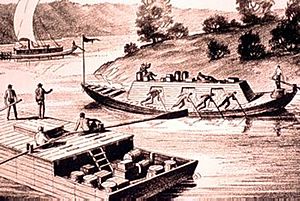
After the American Revolutionary War, river piracy grew along the upper Mississippi River. This was between Spanish Upper Louisiana (near St. Louis) and where the Ohio River joins the Mississippi at Cairo. In 1803, at Tower Rock, U.S. Army soldiers raided the area and drove out the river pirates.
Stack Island became known for river pirates and people who made fake money. In 1809, the last major river pirate activity on the upper Mississippi ended. A group of flatboatmen decided to attack Stack Island and get rid of the pirates.
From 1790 to 1834, Cave-In-Rock was a main hideout for river pirates on the Ohio River. This famous cave is now part of Illinois's Cave-in-Rock State Park. In 1797, Samuel Mason led a gang of robbers and river pirates there. Mason had been a captain in the Revolutionary War. He started his criminal group in Kentucky but was driven out by local groups. He then moved his operations to Cave-In-Rock and later along the Mississippi River.
Other outlaws like Bully Wilson and the Harpe Brothers were also linked to Cave-In-Rock. Peter Alston, the son of a counterfeiter, also became a river pirate there.
North of Cave-In-Rock, Jonathan Brown led a small gang of river pirates at Battery Rock. The U.S. Army often patrolled the lower Ohio River. Soldiers at Fort Massac helped protect against Native Americans, Spanish raiders, and river outlaws.
Between 1790 and 1820, a pirate known as Colonel Plug led a gang on the Ohio River. They hid in a cypress swamp near the Cache River. Plug's trick was to sneak onto a boat and remove the caulking (material that seals gaps) or drill holes. This would cause the boat to sink, making it easy to attack. The boat and its cargo would then be sold.
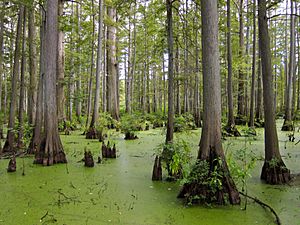
James Ford, a community leader and businessman, secretly led a gang of river pirates and robbers from the 1820s to the mid-1830s. They operated on the Ohio River in Illinois and Kentucky.
River piracy continued on the lower Mississippi River until the 1840s. These pirates were often part of large gangs, like Samuel Mason's, or smaller groups led by John A. Murrell.
American river piracy slowly ended between 1804 and the 1840s. This happened because of military actions and the combined efforts of local law enforcement and citizen groups. These groups worked to remove and stop the outlaw gangs.
New York City Waterfront
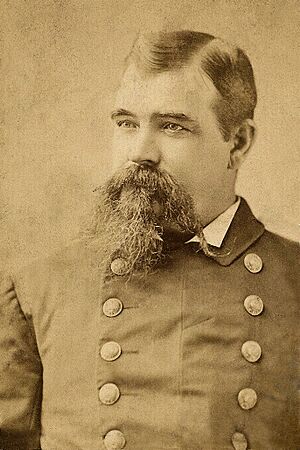
From 1866 to 1877, the New York City waterfront had many river pirate gangs. These pirates mainly stole goods and cargo from ships in the water and docked at the piers. Many of these gangs were well-organized. They were often made up of working-class Irish Americans and Irish immigrants. Some of the most well-known New York river pirate gangs were the Charlton Street Gang, the Hook Gang, and the Patsey Conroy Gang.
In the mid-1860s, the Charlton Street Gang was led by a female pirate named Sadie "the Goat" Farrell. Sadie the Goat and her gang tried to act like the famous pirates from the "Golden Age of Piracy."
The Charlton Street Gang attacked small cargo and merchant ships. They operated in the area of New York City, the Hudson River, and even as far as Poughkeepsie and Albany, New York. By 1869, the gang disappeared.
River piracy in New York City began to decline in 1876. The New York City Police Department, led by Sergeant George W. Gastlin, formed the "Steamboat Squad". This squad used armed police patrols in boats to confront and arrest the river pirates in New York harbor.
United States – Mexico Border
Rio Grande Piracy
There has been an increase in crime on Falcon Lake, which is on the border between the United States and Mexico. This lake is a 60-mile (97 km) long reservoir of the Rio Grande. It has become known for river piracy.
River Pirates in South America
In recent years, river pirate activity on the Amazon River has been increasing in several countries.
In northern Brazil, there has been a lack of security. This has caused river pirate activity to rise sharply. Attacks against oil tankers, cargo boats, and fishermen have become very common in this region.


